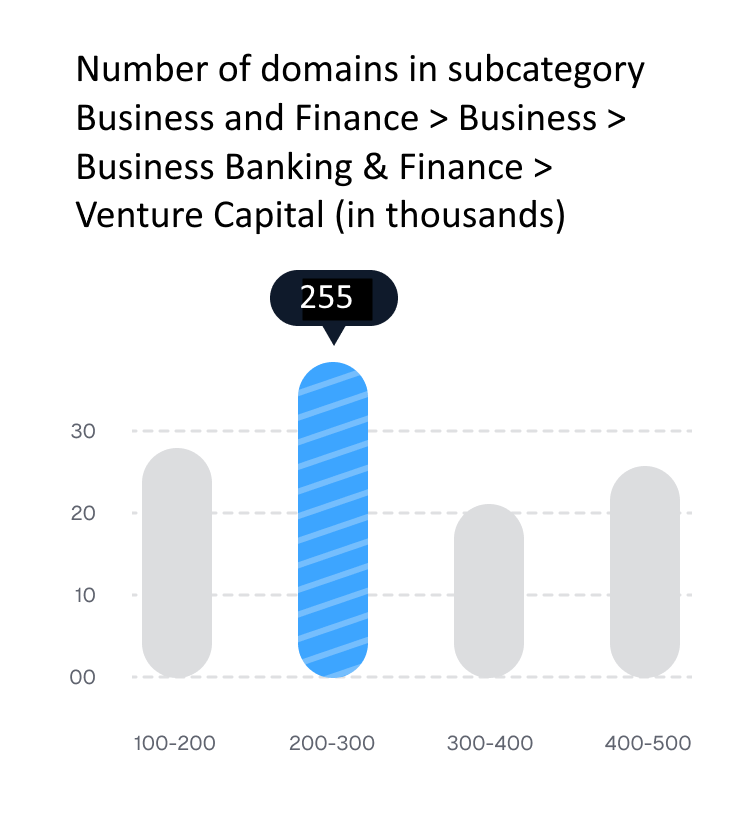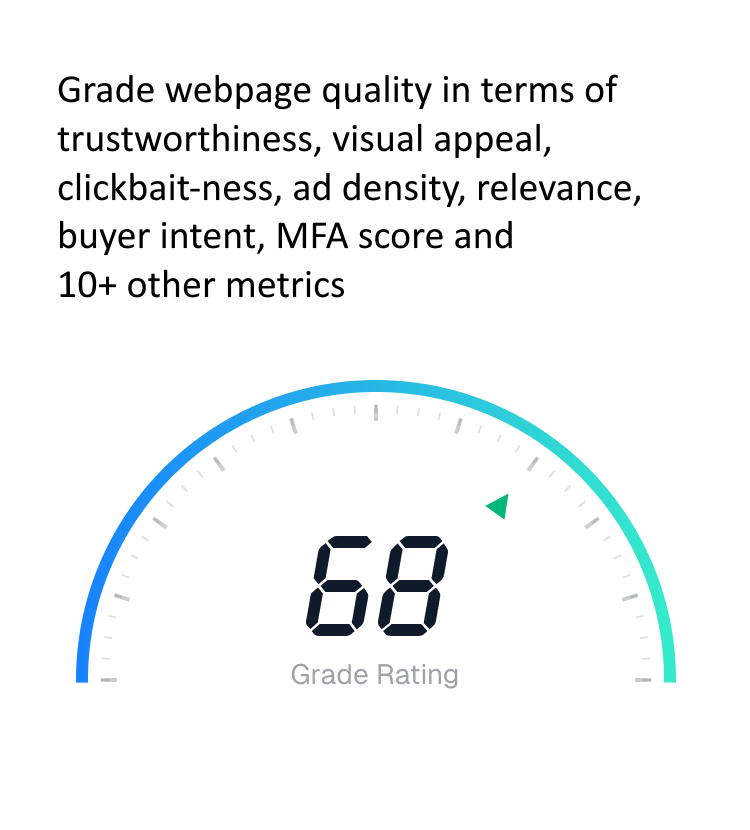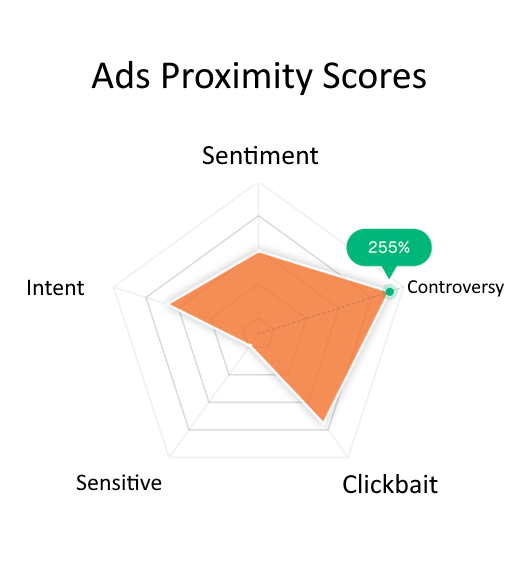One API. All major classification standards. Support for IAB, IPTC, Google Shopping, Shopify, Amazon, and more. Get comprehensive categorization across every industry standard taxonomy.
Try Live DemoIn the complex landscape of digital content classification, different industries and applications require different taxonomies. Publishers need news-focused categorization systems, e-commerce platforms require product taxonomies, and advertisers demand brand safety classifications. Managing multiple categorization services to cover these diverse needs is expensive, complicated, and introduces inconsistencies across your organization.

Our multi-taxonomy support eliminates this complexity by providing comprehensive categorization across all major classification standards through a single API call. Every URL you submit is simultaneously analyzed and categorized according to multiple taxonomies, giving you complete flexibility in how you classify and organize content without managing multiple vendor relationships or integration points.
This unified approach delivers significant advantages: consistent data quality across taxonomies, reduced integration complexity, lower costs compared to multiple services, simplified vendor management, and the ability to compare and cross-reference categories across different classification systems. Whether you're building advertising technology, content management systems, cybersecurity tools, or data analytics platforms, our comprehensive taxonomy support provides the foundation for sophisticated content classification.
We provide categorization support for the following industry-standard taxonomies, each selected for its widespread adoption and relevance to specific use cases:
The latest version of the Internet Advertising Bureau's content taxonomy, featuring refined categories and improved hierarchical structure for digital advertising and content classification.
The widely-adopted previous version of the IAB taxonomy, still used by many advertising platforms and demand-side platforms for backward compatibility.
The International Press Telecommunications Council's comprehensive news categorization system, used by Reuters, Associated Press, BBC, and other major news organizations worldwide.
Google's extensive product taxonomy used by millions of online retailers for product categorization in Google Shopping, merchant feeds, and e-commerce platforms.
Shopify's comprehensive product categorization system, providing detailed classification for e-commerce products across all retail verticals and categories.
Amazon's massive product taxonomy covering virtually every product category sold globally, enabling precise e-commerce categorization and product discovery.
Our proprietary filtering taxonomy designed for content filtering, parental controls, and web security applications, focusing on potentially harmful or inappropriate content.
The Internet Advertising Bureau (IAB) Content Taxonomy has become the de facto standard for digital advertising content classification. Developed and maintained by the IAB, a global advertising industry organization with members including Google, Facebook, The New York Times, and thousands of other publishers and advertisers, this taxonomy provides a consistent framework for describing website content in the context of digital advertising.
We support both version 2.0 and version 3.0 of the IAB Content Taxonomy, ensuring compatibility with legacy systems while providing access to the latest taxonomy improvements. The taxonomy uses a hierarchical four-tier structure, moving from broad top-level categories like "Automotive," "Technology & Computing," and "Food & Drink" down to highly specific fourth-tier categories like "Electric Vehicle Charging Stations" or "Gluten-Free Cooking."

This hierarchical structure provides flexibility in how you use categorization results. Applications requiring broad categorization can use only top-level categories, while those needing precision can leverage the full four-tier hierarchy. For example, a automotive website might be categorized as:
Version 3.0 introduced several improvements over version 2.0, including refined category definitions, better coverage of emerging content areas like cryptocurrency and streaming entertainment, improved handling of sensitive categories, and enhanced alignment with modern content types. Our system returns results for both versions simultaneously, allowing you to choose which version best fits your application or gradually migrate from v2.0 to v3.0.
For news content, the IPTC NewsCodes taxonomy provides unmatched depth and precision. Developed by the International Press Telecommunications Council, an industry consortium of the world's major news agencies and publishers, this taxonomy was specifically designed for journalistic content classification.
IPTC NewsCodes covers not just broad news categories but also nuanced subcategories essential for news classification. The taxonomy includes categories for specific sports (from archery to wrestling), detailed political topics (election campaigns, diplomatic relations, political appointments), entertainment categories (by media type and genre), and comprehensive coverage of business, science, technology, and cultural topics.
Our IPTC categorization leverages specialized models trained specifically on news content, understanding journalistic writing styles, news article structures, and the unique characteristics of news versus other content types. This specialization ensures accurate categorization even for breaking news stories and rapidly evolving topics.
News organizations use our IPTC categorization to automatically route stories to appropriate desks, tag articles for content management systems, personalize news feeds based on reader interests, and organize news archives. The taxonomy's comprehensive coverage means even specialized news topics receive accurate, specific categorization rather than generic classifications.
E-commerce applications require different categorization approaches than content or news classification. Product taxonomies like Google Shopping, Shopify, and Amazon taxonomies focus on product attributes, categories, and shopping contexts rather than content themes.
Our support for e-commerce taxonomies enables several powerful use cases. Online retailers can automatically categorize product pages for merchant feeds, marketplaces can classify seller listings, price comparison engines can normalize product categories across retailers, and market research teams can analyze e-commerce competitive landscapes.
Google Shopping Taxonomy: With 5,474 categories, this taxonomy covers products across all retail verticals. Categories follow a hierarchical structure like "Apparel & Accessories > Clothing > Activewear > Compression Sportswear." Our categorization engine understands both the product being sold and the commercial context to select appropriate categories.
Shopify Product Taxonomy: Shopify's taxonomy provides even more granular classification with 10,560 categories. This taxonomy excels at distinguishing between similar products and capturing specific product attributes within category structures. It's particularly valuable for multi-category retailers needing precise product organization.
Amazon Product Taxonomy: Amazon's massive 39,004-category taxonomy represents the most comprehensive product classification system available. This taxonomy captures not just product categories but also reflects Amazon's sophisticated understanding of product relationships, customer shopping patterns, and marketplace organization.

When you submit an e-commerce URL to our API, our system analyzes product information, descriptions, images, pricing, and page structure to determine the most appropriate categories across all three e-commerce taxonomies. This multi-taxonomy approach is particularly valuable when you need to map products between platforms or maintain consistency across multiple sales channels.
Content filtering, parental controls, and web security applications require a different type of taxonomy focused on identifying potentially inappropriate, harmful, or risky content. Our proprietary Web Content Filtering taxonomy addresses these needs with 44 carefully designed categories covering:
Unlike general content taxonomies that describe topics neutrally, our filtering taxonomy explicitly identifies content that organizations might want to filter, block, or monitor. Categories are designed to support flexible filtering policies, allowing different restriction levels for different user groups or contexts.
Schools might block adult content and violent content while allowing educational resources and age-appropriate entertainment. Workplace filtering might block social media and streaming services while allowing business-related sites. Parental control applications can implement age-appropriate restrictions based on detailed category information.
Our filtering taxonomy is continuously updated to address new content types and emerging risks. As new social platforms emerge, new forms of inappropriate content appear, or new security threats develop, we add and refine categories to ensure comprehensive coverage.
One of the most powerful aspects of multi-taxonomy support is the ability to analyze how different classification systems categorize the same content. This cross-taxonomy analysis reveals insights impossible to obtain from single-taxonomy categorization.
For example, a technology news website might receive categorizations like:
This consistency across taxonomies provides confidence in categorization accuracy. When multiple independent taxonomies agree on classification, you can trust the results. Conversely, discrepancies across taxonomies might indicate mixed content, ambiguous categorization, or edge cases requiring human review.
Cross-taxonomy analysis also enables sophisticated applications like taxonomy translation (mapping categories from one taxonomy to another), ensemble classification (combining multiple taxonomy results for improved accuracy), and multi-dimensional content analysis (understanding content from multiple classification perspectives simultaneously).
Implementing multi-taxonomy support is straightforward with our API. By default, every categorization request returns results for all supported taxonomies. You can optionally specify which taxonomies you want to receive, reducing response size and processing time when you only need specific taxonomies.
API responses organize taxonomy results as separate objects within the response structure. Each taxonomy section includes the complete category hierarchy, confidence scores for each category, and taxonomy-specific metadata. This organization allows you to easily extract the taxonomies relevant to your application while ignoring others.
Our SDKs provide helper functions for working with multi-taxonomy responses, including methods to extract specific taxonomies, find common categories across taxonomies, filter categories by confidence thresholds, and convert between taxonomy formats. These utilities simplify the development of applications that leverage multiple taxonomies.
While our API returns results for all taxonomies, choosing the right taxonomy or taxonomies for your application ensures optimal results:
Choose IAB Taxonomy when: Building advertising technology, implementing brand safety controls, categorizing general web content, or when compatibility with industry standards is required. The IAB taxonomy's widespread adoption makes it the safe choice for most digital advertising applications.
Choose IPTC NewsCodes when: Classifying news content, building news aggregators, organizing journalistic content, or when detailed news-specific categories are needed. The taxonomy's design by and for news organizations ensures optimal news classification.
Choose E-Commerce Taxonomies when: Categorizing product pages, building shopping applications, analyzing e-commerce competitors, or integrating with shopping platforms. Match your taxonomy choice to your target platform (Google Shopping for merchant feeds, Shopify for that platform, Amazon for marketplace analysis).
Choose Web Content Filtering when: Building parental controls, implementing workplace web filtering, categorizing sites for security purposes, or when focus on potentially inappropriate content is needed.
Many applications benefit from using multiple taxonomies simultaneously. Ad tech platforms might use both IAB (for general categorization) and Web Content Filtering (for brand safety). E-commerce analytics tools might use multiple product taxonomies to track products across platforms. News applications might combine IPTC (for news content) with IAB (for other content types).
Taxonomies evolve to reflect changing content landscapes, emerging topics, and shifting industry needs. We continuously monitor taxonomy updates from standards organizations and implement changes promptly to ensure our categorization remains current.
When the IAB releases taxonomy updates, we retrain our models to incorporate new categories and definitional changes. When e-commerce platforms add product categories, we update our training data and validation processes. This ongoing maintenance ensures you always have access to the latest taxonomy versions without any action required on your part.
We also monitor feedback from our API users to identify taxonomy gaps, ambiguous categories, or emerging content types requiring new classifications. This feedback loop helps improve not just our categorization but also informs taxonomy standards organizations about real-world classification challenges.
See how our API delivers comprehensive categorization across all major taxonomies in a single request.
Try Free Demo Now